A short drive away from the city’s pollution and traffic takes you to the Sankalpa Art Village and Nursery, a destination which promotes everything eco-friendly. Jaya Siva Murty brings you the story.
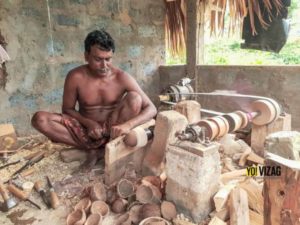 As one walks in, a thatched shelter, with a wooden table displaying Sankalpa’s wares catches the attention. Terracotta reds and the Etikoppaka riot of colours vie for attention along with the handloom cloth and other products. Beyond the shed is the stretch of the nursery, where a wide variety of plants present a canopy of green.
As one walks in, a thatched shelter, with a wooden table displaying Sankalpa’s wares catches the attention. Terracotta reds and the Etikoppaka riot of colours vie for attention along with the handloom cloth and other products. Beyond the shed is the stretch of the nursery, where a wide variety of plants present a canopy of green.
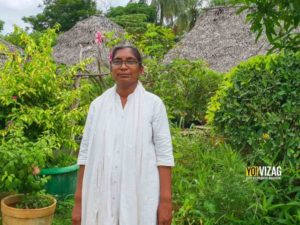 A concept that began to operate four years ago, the seed of the idea was sown much before that. “We came here from Rajahmundry and have been managing a nursery since 1997. Initially, we would use chemicals but we slowly shifted to natural fertilisers”, shares Parvati, who manages operations along with her husband Chalapathi Rao and daughter Jameelya. Today the nursery that’s spread over eight acres has many plants. As Parvati attends a call narrating the list of medicinal plants and their uses to an interested caller, we look at the spread of eco-friendly pots made from coconut husk and terracotta. Local breed of cows are reared in the premises as well. Seed balls are also being readied at one corner. “These will be put into rivers so that they germinate”, shares Chalapati Rao. Plants are usually given out on rental basis and the nursery takes up landscaping for prestigious projects like the INS Dega golf course, along with others. People also occasionally come to the village to buy plants.
A concept that began to operate four years ago, the seed of the idea was sown much before that. “We came here from Rajahmundry and have been managing a nursery since 1997. Initially, we would use chemicals but we slowly shifted to natural fertilisers”, shares Parvati, who manages operations along with her husband Chalapathi Rao and daughter Jameelya. Today the nursery that’s spread over eight acres has many plants. As Parvati attends a call narrating the list of medicinal plants and their uses to an interested caller, we look at the spread of eco-friendly pots made from coconut husk and terracotta. Local breed of cows are reared in the premises as well. Seed balls are also being readied at one corner. “These will be put into rivers so that they germinate”, shares Chalapati Rao. Plants are usually given out on rental basis and the nursery takes up landscaping for prestigious projects like the INS Dega golf course, along with others. People also occasionally come to the village to buy plants.
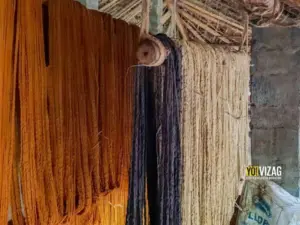 The desire to do something more propelled them towards the Sankalpa Art Village. “We wanted to help develop the region around us, and give sustainable livelihood options.” The thought led them to meet Prof. Sudhakar Reddy, who introduced the concept of natural weaving and dyeing. In 2014, the Sankalpa Art Village was set up over four acres of land and started with two pit looms. Bringing in weavers from a village near Tuni, Sankalpa today supports the families with accommodation and a steady salary. The cloth they produce is handmade, with natural dyes. While yarn dyeing is common, tie and dye is popular too. Turmeric yellows, jaggery browns and blues from red cabbage present a delicious mix of smells and sights at the dyeing unit. Parvati shares that many colours can be extracted from natural substances.
The desire to do something more propelled them towards the Sankalpa Art Village. “We wanted to help develop the region around us, and give sustainable livelihood options.” The thought led them to meet Prof. Sudhakar Reddy, who introduced the concept of natural weaving and dyeing. In 2014, the Sankalpa Art Village was set up over four acres of land and started with two pit looms. Bringing in weavers from a village near Tuni, Sankalpa today supports the families with accommodation and a steady salary. The cloth they produce is handmade, with natural dyes. While yarn dyeing is common, tie and dye is popular too. Turmeric yellows, jaggery browns and blues from red cabbage present a delicious mix of smells and sights at the dyeing unit. Parvati shares that many colours can be extracted from natural substances.
And that’s not all. The art village also promotes eco-friendly Etikoppaka toys and wood art which is done using the locally available palm-wood and coconut shells. Terracotta vessels are crafted here in delightfully new shapes and utilities. Products made from healthy metals and alloys are brought in from Coimbatore along with herbal cleaning products from Simhachalam, minor millets from Girijan regions and finely woven mats from West Bengal. As we see the artisan working on smoothening the coconut shells, the end products are not just pretty but have utilitarian values too.
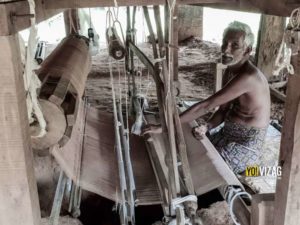 A simple place that offers a refreshingly unpretentious way of life, plans of this art village are large. “We want to train students from the region so that they learn a skill they can use.” Plans to introduce cotton fields and yarn making are there, as they currently have to procure mill-made yarn. With the hope to convert this to a University being on the cards as well, Sankalpa aims to focus on improving life in the villages around it. The journey towards their destination is however both long and hard. One of the hurdles that they face is the number of locals coming to participate. “Children from the villages who attend the workshops do not show a sustained interest in learning”, shares Parvati, adding that only if they learn this for a month can they use it as a job skill.
A simple place that offers a refreshingly unpretentious way of life, plans of this art village are large. “We want to train students from the region so that they learn a skill they can use.” Plans to introduce cotton fields and yarn making are there, as they currently have to procure mill-made yarn. With the hope to convert this to a University being on the cards as well, Sankalpa aims to focus on improving life in the villages around it. The journey towards their destination is however both long and hard. One of the hurdles that they face is the number of locals coming to participate. “Children from the villages who attend the workshops do not show a sustained interest in learning”, shares Parvati, adding that only if they learn this for a month can they use it as a job skill.
The response to their range of completely handmade products is however good. With sales taking place through handloom shandies that they would participate in, they now sell at the venue or online through students. “People who understand the value of natural products, come to the village to pick up these products. It’s good for health with natural dyes reducing the instances of skin diseases and promoting health.”
Employing 30 people in the nursery, six of them are employed at the art village as well. Besides them, Sankalpa also sends yarn and gets weaving done at a village in West Godavari. A few terracotta products are also made by women of an old age home, to help generate income. With students from the city coming to them for internships, they regularly conduct sales and workshops on weaving and pottery as well. While their work is a source of happiness for this family, they hope that the handmade crafts do not disappear into oblivion. The vision of the Sankalpa Art Village is a beautiful and sustainable one, as it breathes life to the dying traditional crafts of the region.
People who understand the value of natural products, come to the village to pick up these products.


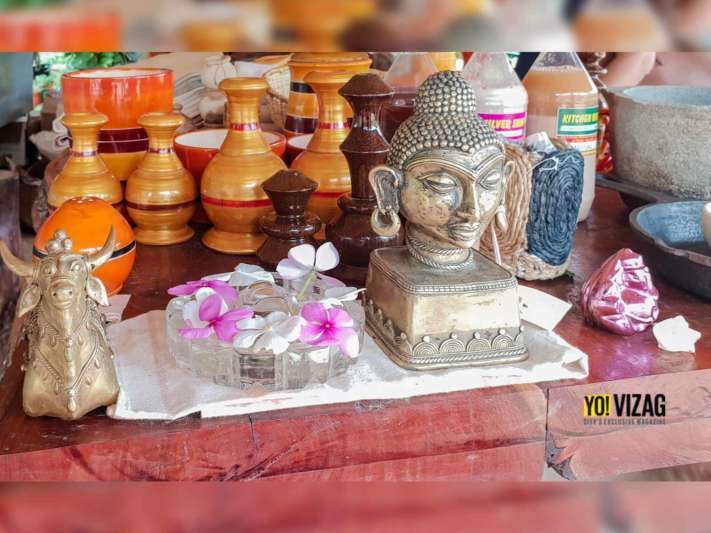





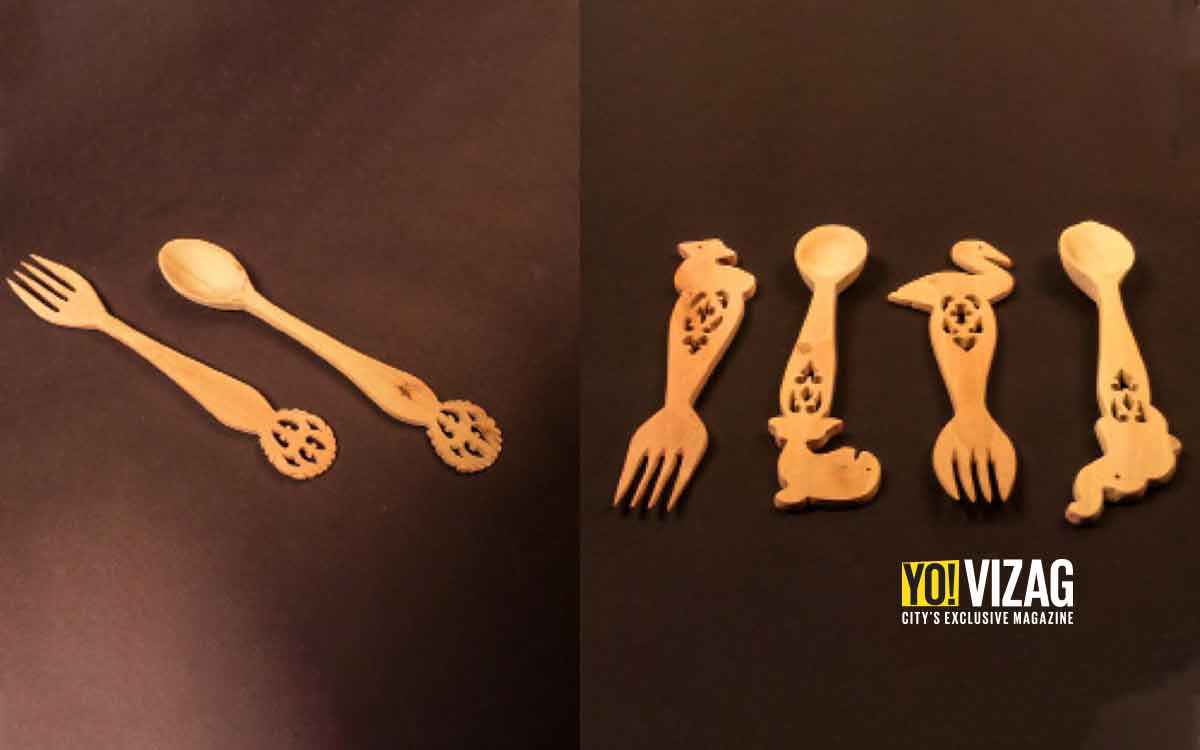

Discussion about this post